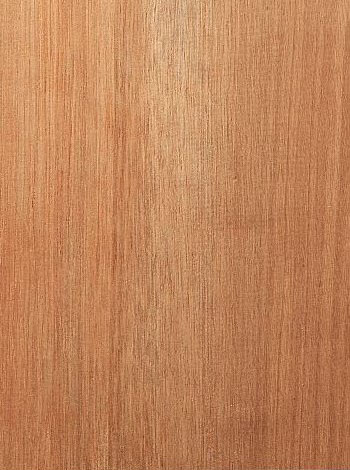| Introduction | The Standard Malaysian Name for the light and reddish timber of the family Sapotaceae. Vernacular names applied include nyatoh (Peninsular Malaysia, Sabah and Sarawak) with various epithets and also bengku (Peninsular Malaysia), ekor (Peninsular Malaysia), jangkar (Sarawak), mentua taban (Peninsular Malaysia), rian (Sarawak), semaram (Peninsular Malaysia), sundik (Peninsular Malaysia), taban (Peninsular Malaysia) and taban merah (Peninsular Malaysia). Major species of the timber include Madhuca curtisii, M. kingiana, M. motleyana, M. erythrophylla, M. laurifolia, M. longistyla, M. penicillata, M. sericea, M. sp. A, M. sp. B; Palaquium clarkeanum, P. gutta, P. hexandrum, P. hispidum, P. impressinervium, P. maingayi, P. microphyllum, P. obovatum, P. oxleyanum, P. regina-montium, P. rostratum, P. semaram, P. xanthochymum; Payena dasyphylla, P. lanceolata, P. maingayi and P. obscura. The sapwood is lighter in colour and is only moderately sharply differentiated from the heartwood, which is deep pink-red or red-brown.
Also known as Nyatoh (Brunei); Chorni (Cambodia); Bauvudi (Fiji); Mahua, Pali and Tali (India); Chonte, Nyatoh and Nyatuh (Indonesia); Jambadung (Laos); Kanzwe (Myanmar); Pencil cedar (Papua New Guinea); Alakaak, Kalipaya, Long-leafed nato, Malak-malak, Maniknik, Mindanao nato, Nato, Palak-palak, Red nato, Tagatoi and Tipurus (Philippines); Kirihembiliya and Tawenna (Sri Lanka); and Chik Nom, Chik-khao, Phikun-nok, Phikun-pa, Phikun-thuan and Tabun Dam (Thailand). |
| Botanical Name: | Palaquium species, principally P. galactoxylum, P. hexandrum, P. ellipticum, P. obovatum, P. rostratum, P. hornei, P. amboinense. Family: Sapotaceae. |
| Natural Durability: | Nyatoh shows variable natural durability in accordance to the species. The majority of the species would fall into the moderately durable class but there are species that are non-durable as well as those which are durable. Results obtained from the graveyard tests conducted at the Forest Research Institute Malaysia (FRIM) on nyatoh species are given in the table below. The timber is subject to termite attacks and is also susceptible to fungal attacks. However, it is rarely susceptible to powder-post beetle attacks.
When treated with appropriate preservatives, nyatoh shows great durability. A series of tests using P. maingayi, treated with 100% creosote to an average absorption of 285 kg/m3 (17.82 lb/ft3) was started in 1949. The first stick was destroyed only after 12 years and after 32 years, seven sticks were still sound. Further tests involving other species of nyatoh also showed that this timber is very durable when treated. A series of test using P. gutta was started in 1966 and after 15 years, only three out of the original 40 test sticks were destroyed. A similar series, using P. impressinervium was started in 1969 and all the sticks were found to be still sound in 1981. However, in a duplicate trial, six out of an original 16 sticks were destroyed after 10.5 years. Diploknema sebifera, however gave a less impressive performance when tested. A series was started in 1971 and after 10 years, only six of the original 40 test sticks were still sound. |
| Uses: | Nyatoh is a very popular timber for furniture and solid door. It is suitable for high class decorative works and interior finishing such as panelling, mouldings and partitioning. Other uses include joinery, flooring, decking, staircase (angle block, rough bracket, baluster, balustrade, carriage, handrail, riser, stringer, tread, bullnose, round end and winder), columns (light duty), plywood, pallets, beams, rafters, joists (light duty), door and window frames and sills (internal use only), vehicle bodies (planking), ship and boat building (keels, keelsons, framework and general planking), railway sleepers and tool handles (impact). |
| Texture: | Texture is moderately fine to slightly coarse, with straight to shallowly interlocked and sometimes wavy grain. |
| Density: | The timber is a Light Hardwood with a density of 400-1,075 kg/m3 air dry. |
| Shrinkage: | Shrinkage values depend on nyatoh species. Radial shrinkage averaging 1.0% to 3.0% and tangential shrinkage averaging 1.9% to 4.3%. |
| Defect: | Generally, nyatoh logs are rather free from defects. Spongy heart has been observed in a few logs. Other defects such as defective cores, gum pockets and areas of rot have been noted in test material of P. impressinervium. Borer holes, probably caused by longicorn beetles have been recorded (Thomas, 1950). The logs have a tendency to split at the ends if care is not taken to have them stored properly. End-coating of the logs is recommended if they are to be stored for any period prior to conversion. |

